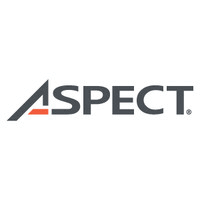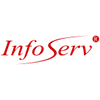Yes, most current incoming call center software may be accessed from a variety of devices and platforms. Whether you're using a desktop computer, laptop, tablet, or smartphone, you may quickly access the software via web browser. Furthermore, several companies offer downloadable mobile apps for added convenience. This enables you to manage and monitor your call center operations from anywhere and at any time.
List of Best Inbound Call Center Software
Elevate your organizations workforce management with Aspect is a platform that offers a range of tools including workforce planning, scheduling, quality and performance management, recording, surveying, coaching, eLearning, and analytics. Streamline...Read More Aspect
CallTools is a control and auto-dialer solution designed to accelerate your teams productivity. With an advanced predictive dialing algorithm, reach out to more customers and prospects efficiently and effectively. Say goodbye to manual dialing and he...Read More CallTools
Voiptime Cloud the cloud-based call center solution that prioritizes your agents productivity. With an easy setup and affordable international call rates in 140+ countries, you can be up and running within a day. Equip your team with advanced feature...Read More Voiptime Cloud
Deskpro is a helpdesk solution for streamlining ticket management, providing in-depth data analysis through advanced reporting, and enabling seamless multi-channel support. With Deskpro, businesses can boost teamwork, boost efficiency, and provide ex...Read More Deskpro
InfoServ is a CRM solution designed to help sales and marketing businesses effectively manage their customer relationships. Our cloud-based platform provides full visibility and promotes long-term customer engagement. With powerful multi-channel camp...Read More InfoServ
Bright Pattern is a contact center solution, integrating flawlessly with multi-channel CRM to streamline business processes. Our platform simplifies inbound and outbound communication through various channels, including voice, email, chat, and social...Read More Bright Pattern
NICE inContact Call Center - a state-of-the-art solution powered by AI to enhance customer interactions and streamline business operations. With real-time agent support, seamless journey management, and valuable insights for exceptional service acros...Read More NICE inContact Call Center
KENT CamCall is the video call solution tailored for businesses. Elevate your customer engagement with the most interactive platform available. Simplify and enhance your communication process with customer-initiated calls, exclusively offered by KENT...Read More KENT CamCall
Learn More About Inbound Call Center Software
- What Is Inbound Call Center Software?
- What Are The Recent Trends In Inbound Call Center Software?
- Benefits Of Using Inbound Call Center Software
- Important Factors To Consider While Purchasing Inbound Call Center Software?
- What Are The Key Features To Look For In Inbound Call Center Software?
- Why Do Businesses Need Inbound Call Center Software?
- How Much Time Is Required To Implement Inbound Call Center Software?
- What Is The Level Of Customization Available In Inbound Call Center Software?
- Which Industries Can Benefit The Most From Inbound Call Center Software?
- Conclusion
What Is Inbound Call Center Software?
Inbound call center software is a strong tool that helps businesses streamline and improve their customer service experiences. It is an essential component of every contact center because it facilitates seamless communication between clients and agents. This program employs innovative technology to efficiently manage and prioritize incoming customer calls, ensuring that all inquiries are handled in a timely and organized manner.
It also includes capabilities like call routing, interactive voice response (IVR), and real-time reporting, allowing organizations to give excellent customer care. One of the most significant advantages of incoming call center software is its ability to intelligently route calls depending on customer information and agent availability. This guarantees that consumers are connected to the most appropriate agent for their unique needs, improving the likelihood of a successful and acceptable resolution.
In addition, incoming call center software has a sophisticated IVR system that allows customers to self-direct their call to the proper department or access self-service information. This function not only minimizes call wait times, but also allows operators to tackle more difficult inquiries. Real-time reporting is another important aspect of inbound call center software, allowing businesses to track and analyze call metrics and performance statistics.
This data enables firms to identify areas for development and make data-driven decisions that improve their customer service operations. When selecting the best incoming call center software for your company, there are various variables to consider, including scalability, simplicity of integration, and pricing alternatives. It is critical to choose software that is aligned with your business objectives and can adapt to changing requirements.
What Are The Recent Trends In Inbound Call Center Software?
In recent years, inbound call center software has changed dramatically to meet the changing needs and wants of both customers and enterprises. With technology developments and an emphasis on improving the overall customer experience, the incoming call center software business has seen several significant trends emerge.
1. Cloud-Based Solutions: One of the most significant changes in inbound call center software is the transition to cloud-based solutions. This enables enterprises to access the software from anywhere and at any time, eliminating the need for physical infrastructure. Furthermore, cloud-based solutions provide greater scalability and flexibility, allowing businesses to better manage call traffic changes.
2. Omnichannel Communication: Customers today expect to be able to contact businesses via a variety of channels, such as phone calls, emails, live chat, and social media. In response, several incoming call center software suppliers now feature omnichannel communication capabilities. This implies that operators can switch between channels without losing context, giving customers a more personalized and efficient experience.
3. Artificial Intelligence (AI) Integration: AI technology has improved significantly in recent years, and it has been incorporated into many parts of inbound call center software. This includes automatic speech recognition, chatbots, and natural language processing, all of which help to streamline and automate call center activities including call routing and customer support inquiries.
4. Real-Time Analytics: Inbound call center software now includes real-time analytics, giving firms important insights into their call center operations. This contains information on call volume, average handling time, and call resolution rates, which may be utilized to make informed decisions and improve overall performance.
5. Integration Of CRM Systems: Integrating inbound call center software with customer relationship management (CRM) systems has become an important trend in recent years. This enables a more smooth flow of information between the call center and other departments, resulting in a more consistent client experience.
Benefits Of Using Inbound Call Center Software
As technology advances and customer demands rise, organizations are turning to inbound call center software to optimize their customer engagement processes. This user-friendly software enables organizations to swiftly handle incoming calls while also providing a superior customer experience.
Here are some of the major advantages of adopting incoming call center software:
1. Improved Call Routing: Inbound call center software employs complex algorithms to route calls to the most qualified agent based on their abilities, availability, and priority level. This ensures that consumers are always connected to the appropriate agent, resulting in speedier resolution of their concerns.
2. Time And Cost Savings: By automating the call routing process, incoming call center software eliminates the need for manual intervention and shortens wait times, resulting in considerable cost savings. Furthermore, services like as call monitoring and call recording assist firms in analyzing call data and improving operational efficiency.
3. Personalized Consumer Experience: Inbound call center software includes capabilities like IVR (Interactive Voice Response) menus and CRM connectivity, allowing firms to collect consumer information and personalize their communications. This not only enhances the entire client experience, but also enables businesses to upsell or cross-sell their products or services.
4. Real-Time Analytics: Real-time reporting and analytics enable businesses to track key call parameters such as call volume, wait times, and agent performance. This allows them to identify areas for improvement and make data-driven decisions that improve their customer service.
5. Multi-Channel Support: In today's digital age, customers want to communicate with businesses over a variety of channels, such as phone, email, chat, and social media. Inbound call center software consolidates multiple channels into a single platform, making it easier for agents to address client inquiries and give a consistent omnichannel experience.
6. Scalability: As businesses expand, their call volumes rise. Inbound call center software is scalable, allowing organizations to add more agents and lines as their call volume increases without disturbance.
Important Factors To Consider While Purchasing Inbound Call Center Software?
When it comes to choosing inbound call center software, you must examine a number of criteria to ensure that you are making the best decision for your business. With so many options on the market, it can be difficult to choose which one is most suited to your individual requirements.
To help you make an informed decision, here are some key considerations when selecting incoming call center software.
1. Features And Functionality: The software's features and functionality are the most important factors to evaluate. It should have all of the tools and capabilities you need to run your call center operations, such as call routing, call recording, IVR, real-time analytics, and more. It should also be simple to use with a user-friendly UI.
2. Scalability: As your company grows, your call center software should be able to keep up. As your business grows, it is critical to select a scalable system that can handle increased call volume and agents. This will spare you the headache of switching to new software in the future.
3. Integration: In today's digital age, it is critical that your call center software integrates with your existing tools and systems, such as CRM, ticketing, and help desk software. This will increase efficiency and streamline operations for your agents, hence improving the client experience.
4. Customization: Each organization has distinct needs, and your call center software should be able to meet them. Look for a solution that allows for customization, such as custom reports, bespoke IVR messages, and call scripts, to meet your specific business requirements.
5. Reliability And Uptime: A dependable call center software is required to maintain continuous communication with your consumers. To avoid delays or downtime in your call center, look for a solution with a good uptime guarantee and a track record of reliable service.
6. Cost: While price should not be the sole deciding factor, it is critical to consider your budget when selecting call center software. Compare pricing for several options to ensure that you are receiving the best value for your money in terms of features, functionality, and ROI.
7. Customer Support: Technical issues and inquiries might develop at any time, so your call center software vendor must provide excellent customer service. Look for a solution that provides 24-hour support and has a track record of giving timely and effective assistance to customers. Keeping these things in mind will allow you to narrow down your selections and select the best incoming call center software for your company. It is also important that you study reviews and gather input from other firms that have utilized the program before making a selection. Remember, the correct call center software can have a significant impact on your customer experience and, ultimately, your business's profitability.
What Are The Key Features To Look For In Inbound Call Center Software?
When it comes to selecting the best incoming call center software for your organization, there are numerous crucial characteristics to look for. These features will not only increase the productivity and efficacy of your call center operations, but also improve the overall client experience.
As a buyer, you should first identify your company's specific requirements and then evaluate the program based on these features.
1. Call Routing And Distribution: This feature routes calls to the right agent or department based on specified rules, such as IVR (Interactive Voice Response) or skills-based routing. This guarantees that the caller is directed to the appropriate individual who can successfully address their question or concern, reducing call transfers and wait times.
2. Real-Time Monitoring And Analytics: Real-time monitoring allows supervisors to monitor agent performance and discover issues before they escalate. Advanced analytics technologies aid in the measurement of critical indicators such as call volume, wait times, and call abandonment rates, offering useful insights for making data-driven decisions and enhancing call center performance.
3. CRM Integration: Using customer relationship management (CRM) software, agents can access customer information and call history, resulting in a more personalized and efficient customer care experience. This also allows agents to track and record key customer encounters for future reference.
4. Call Recording And Quality Management: Call recording is an essential tool for training, quality assurance, and compliance. It enables management to review and analyze calls to discover areas for development and verify that agents follow business policies and procedures.
5. Multi-Channel Support: In today's digital age, customers want to communicate with businesses over numerous channels, including phone, email, chat, and social media. Look for software that supports many channels so that your customers may have a smooth omni-channel experience.
6. Interactive Voice Response (IVR): IVR is an automated system that allows callers to traverse a menu and pick items by using their phone's keypad. This feature streamlines the call process, shortens caller wait times, and offers self-service options for routine inquiries, freeing up agent time for more difficult conversations.
7. 24/7 Availability: For firms that operate globally or have consumers in multiple time zones, it is critical to select software that provides 24/7 availability. This means that clients may contact your call center at any time, offering 24-hour service and increasing customer satisfaction.
8. Scalability And Flexibility: As your business expands, so will your call center requirements. It is critical to choose software that is both adaptable and scalable, allowing for the addition of additional features or agents as your organization grows.
Why Do Businesses Need Inbound Call Center Software?
Businesses require inbound call center software to efficiently manage and optimize their customer service operations. This sort of software provides a diverse set of features and capabilities aimed at streamlining and improving the inbound call experience for both customers and agents. First and foremost, inbound call center software offers firms a centralized platform for managing all incoming calls.
This eliminates the need for additional phone lines or software packages, making it easy to manage and track all communication routes. Furthermore, the software often features automatic call distribution, which guarantees that calls are sent to the most qualified agent based on their abilities, availability, or other specified factors.
Furthermore, inbound call center software includes advanced capabilities like interactive voice response (IVR) systems, which allow callers to traverse menus and reach their desired department or information without having to speak with an agent. IVR systems can also be programmed to send tailored messages or collect vital consumer data before connecting them to an agent, saving call handling time and increasing overall call efficiency.
Inbound call center software often provides call monitoring and recording features, allowing firms to evaluate their agents' performance and discover areas for development. This function is especially important for training and maintaining a consistent level of service. Furthermore, the program provides real-time monitoring and analytics, allowing organizations to monitor key performance indicators such as call volume, average handling time, and wait times.
This data can be used to make more educated decisions and enhance the overall consumer experience. Finally, one significant advantage of inbound call center software is its ability to interact with other corporate systems, such as customer relationship management (CRM) software. This connectivity enables agents to instantly access customer information, resulting in more personalized and efficient service.
How Much Time Is Required To Implement Inbound Call Center Software?
The implementation of incoming call center software depends on a number of criteria, including the size of your company, the complexity of your procedures, and the functionality you demand. On average, it can take between a few weeks and several months to properly develop and integrate inbound call center software into your operations. The first stage in the installation process is to understand your specific business requirements and determine the important features that will assist your call center.
This may necessitate a conversation with the software vendor or a full examination of your present call center procedures. Next, the software must be tweaked and set to meet your individual requirements. This process can take several weeks to complete, depending on the level of personalization required. After the software is configured, your call center agents and other employees will need to be trained and onboarded.
This can take anywhere from a few days to several weeks, depending on the software's complexity and the number of users. Once the software is fully implemented, testing and fine-tuning may be required to guarantee that everything works properly. Depending on the size of your call center, this could take anything from a few days to several weeks. Overall, establishing inbound call center software can take anything from a few weeks to several months, but the benefits and efficiency achieved from using the software make the investment worthwhile.
What Is The Level Of Customization Available In Inbound Call Center Software?
Customization options are critical when choosing the best incoming call center software for your organization. The level of customisation provided can have a significant impact on your call center's productivity and performance. So, what level of customization is allowed in inbound call center software? The answer varies depending on the software.
However, the most respected and innovative call center systems provide a high level of customisation to meet the specific demands of enterprises. First and foremost, customisation is possible in terms of call routing and forwarding. This enables organizations to generate individualized call flows depending on a variety of parameters, including agent abilities, caller preferences, and office hours.
With this functionality, you can ensure that incoming calls are routed to the most appropriate agent, resulting in increased customer satisfaction. Inbound call center software also allows you to customize IVR (interactive voice response) menus. These menus can be customized to meet the specific demands of your business, including bespoke greetings, directions, and menu options.
Furthermore, firms can tailor reporting and analytics to their specific measurements and KPIs. This provides for a more precise study of call center performance, allowing businesses to make data-driven decisions to boost efficiency and productivity. Furthermore, most inbound call center software has integration features that enable a seamless connection with other company tools and systems. This implies that organizations may tailor their call center software to operate seamlessly with their existing CRM, help desk, or other software, improving efficiency and productivity.
Which Industries Can Benefit The Most From Inbound Call Center Software?
Customer happiness and loyalty are critical in today's fast-paced and competitive corporate environment. Inbound call center software can help firms handle incoming calls and provide excellent customer service.
While the advantages of adopting this software are clear, one question remains: which sectors will profit the most from incoming call center software?
1. Telecoms And IT Services: In the highly competitive telecoms and IT business, having a reliable incoming call center software is critical for efficiently handling a high volume of calls and providing prompt technical help to customers. This software, which includes intelligent call routing and interactive voice response (IVR), can improve the overall customer experience while also reducing wait times.
2. Retail And E-commerce: Inbound call center software has the potential to transform the retail and e-commerce industries. By integrating with their CRM and order management systems, this software enables agents to instantly access customer information and give tailored help, resulting in increased customer satisfaction and repeat business.
3. Banking And Financial Services: In the banking business, where customers expect quick and precise service, inbound call center software can help streamline procedures and increase productivity. Its capabilities, including as call recording and real-time analytics, offer crucial information for better decision-making and compliance.
4. Healthcare: Inbound call center software can help healthcare providers manage patient questions, appointments, and emergency calls. The software's ability to prioritize calls based on urgency and route them to the relevant department assures a prompt response while also improving overall service quality.
5. Travel And Hospitality: The travel and hospitality industry is built around providing excellent customer service, and inbound call center software may help businesses do just that. This software can boost client happiness and loyalty by processing reservations and cancellations, as well as offering fast support during travel situations.
6. Education: Inbound call center software can help manage student questions and enrollment processes. Schools and universities can provide students and parents with a hassle-free communication experience by implementing features such as queue management and call-back options.
Conclusion
Conclusion: Ultimately, selecting the best inbound call center software for your company necessitates careful evaluation of a variety of variables such as features, pricing, customer support, and scaleability. It is critical to conduct extensive study and analyze many possibilities to choose the greatest fit for your individual requirements. Remember to check the software's compatibility with your current systems and ensure that it includes critical functions like call routing, IVR, and call recording.
Look for advanced features such as real-time statistics and interfaces with CRM or helpdesk software to ensure a more efficient operation. It is also critical to evaluate pricing structure and select software that provides flexibility in the form of subscription plans or pay-per-use choices. Don't forget to question about customer support services and their availability in the event of any technical issues or training requirements.
Consider the software's long-term scalability, as your business and consumer needs may change over time. It should be able to adapt and expand alongside your company without requiring huge financial resources. Finally, by carefully examining your needs and extensively investigating available solutions, you can choose the best inbound call center software to improve customer service, streamline business operations, and increase overall customer experience.
Inbound Call Center Software FAQ's
Can Inbound Call Center Software Be Accessed Across Multiple Devices And Platforms?
Is Inbound Call Center Software Future-Proof And Adaptable To Emerging Technologies Like AI, Blockchain Or IoT?
Yes, inbound call center software is future-proof and adaptable to upcoming technologies such as artificial intelligence, blockchain, and the Internet of Things. As consumer expectations and technology grow, inbound call center software is regularly updated and improved to include new features and integrations, allowing it to adapt to advances in AI, blockchain, and IoT.
With its scalability and flexibility, inbound call center software enables businesses to stay ahead of the competition and meet the expectations of their customers in a fast-paced, ever-changing digital environment.
Is There A Free Trial Offered To Assess Inbound Call Center Software Before Committing?
Yes, many inbound call center software suppliers allow free trial periods to evaluate their products before committing to a plan. These trial periods normally last 14 to 30 days and allow users to access all of the software's features and functionality. This enables organizations to try the software and make an informed choice on whether it fulfills their requirements before making a commitment.
Does Inbound Call Center Software Offer Data Security Features And Meet Regulatory Compliance Standards?
Yes, Inbound Call Center Software prioritizes data security by including features like data encryption, safe data storage, user authentication, and automatic data backups. Furthermore, it follows tight regulatory compliance standards to safeguard the security of sensitive client information. This guarantees that sensitive data is saved and managed securely, providing peace of mind for both the call center and the clients.
Can Inbound Call Center Software Integrate Seamlessly With Existing Tools And Platforms?
Yes, Inbound Call Center Software integrates smoothly with existing tools and platforms. These software solutions are designed to interact with a wide range of systems and can be seamlessly connected with CRMs, ERP systems, and other business tools.
All data is consolidated in one location, allowing for a more efficient and holistic approach to managing client interactions. Customized connections allow organizations to provide a seamless and hassle-free experience for both agents and customers.










